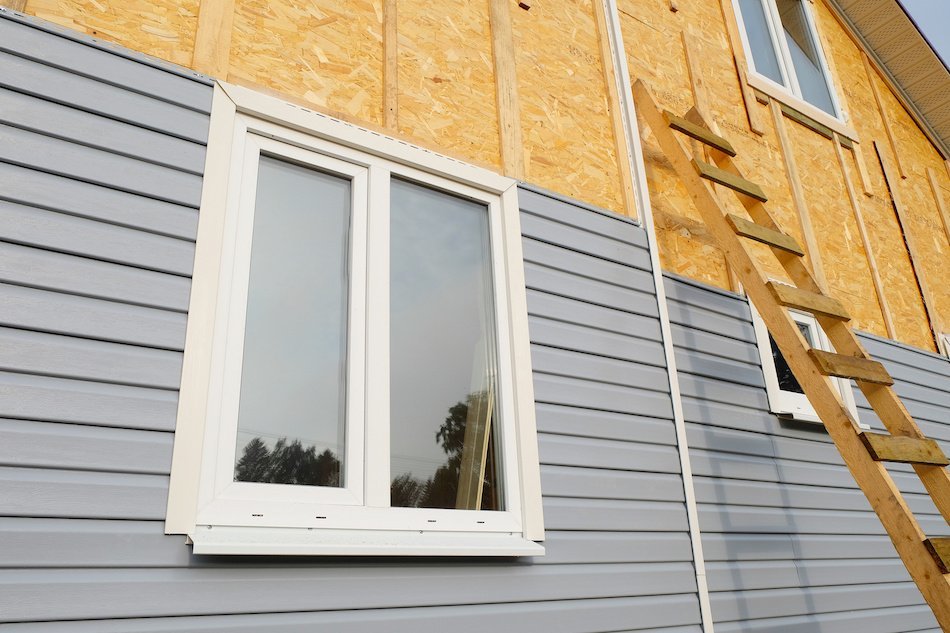Home Siding: How to Choose Between Popular Siding Options
Posted by Gary Ashton on Tuesday, June 18th, 2019 at 12:01pm.
 The siding for a home isn't just one of the first things a person notices about a home, it also serves as a protectant against the elements. The average return on investment for replacing the siding is at least 80 percent when it comes to the resale value of the home, so it pays to invest in a quality material that fits the style of the home. Learn the pros and cons between the different materials, and what qualities to look for before upgrading your home.
The siding for a home isn't just one of the first things a person notices about a home, it also serves as a protectant against the elements. The average return on investment for replacing the siding is at least 80 percent when it comes to the resale value of the home, so it pays to invest in a quality material that fits the style of the home. Learn the pros and cons between the different materials, and what qualities to look for before upgrading your home.
Wood or Brick
Wood is one of the most popular materials for homes because it rolls out the welcome mat for everyone who graces the doorway. The warmth of wood is not only gorgeous, it's also easy to install and energy efficient. However, it's also one of the most vulnerable types of siding a homeowner can choose. Insects, fire, water: practically everything is out to get it. It also tends to be higher maintenance, meaning it will need to be treated once every two or three years.
Brick is another option that can make a home look more inviting, and it's a lot more durable than wood. Meant to last more than 100 years and resistant to fire and insects alike, brick siding is one of the most expensive options on the market. A homeowner could easily pay $15 per square foot, but the value in durability is notable. It may suffer mortar joint damage over time, however, calling for expensive and inconvenient replacements.
Stucco or Stone
Stucco is made of a variety of elements, such as sand and cement. There are several options on the market, but all of them are built to fend off weather, insects, and the inevitable degradation of time. Stucco will usually last between 50 and 100 years. Any damage that does occur to stucco is usually easy to spot, but it's also fairly easy to replace. One disadvantage of stucco is that it cannot be easily repainted, which can make homeowners feel 'stuck; with one color.
Stone is one of the most coveted types of siding available to homeowners. Like brick, stone, is expensive to install, but worth the effort for many homeowners. Both stucco and stone thought are not suitable choices for extremely wet climates, though stone typically holds up better than stucco will. People also choose stone (or its less expensive cousin, stone veneer) because it requires minimal maintenance.
Vinyl or Metal
Homeowners like vinyl because it's meant to withstand the elements without stretching a homeowner's budget. People have an endless variety of shapes and colors to choose from to customize the look of their home, and most vinyl comes with a warranty for several decades after the installation. Vinyl is easy to clean, it's insect- and water-resistant, and it's the least expensive choice on the market. However, vinyl is also prone to denting and scratching, and it may become warped in very warm or very cold weather.
On the other hand, metal siding (e.g., steel, aluminum, etc.) can hold up in extreme climates. It stands its ground against precipitation and insects alike. Even giant hail is typically no match for steel, even if it is prone to rust if not properly sealed. But metal siding has also fallen out of vogue for many homeowners, and it has a tendency to fade over time. Aluminum siding is also much more likely to dent in the event of a hail storm.
Fiber Cement or Composite
Either choice will deliver curb appeal and the look of freshly painted wood siding to any home. Both also have low maintenance needs, especially compared to natural wood siding, and are naturally pest resistant. Fiber cement, however, does not completely repel water and can be problematic for damp locations while composite performs well in these areas. Fiber cement will also need to be painted every 15 years or so.
Fiber cement is made from materials that would otherwise go to waste (i.e., wood fibers), and is typically much less expensive than other options. Composite siding is a petroleum-based product and is not as environmentally friendly as fiber cement. Composite is also considerably more expensive than fiber cement; however, it is typically cheaper to install and is extremely durable and does not require painting or other maintenance for the life of the product.
Ultimately, it depends on a homeowner's stylistic preference and budget when determining what type of siding to go forward with on their home. Consult with a siding professional to find out what will suit your Franklin home and neighborhood best today.

Gary Ashton
The Ashton Real Estate Group of RE/MAX Advantage
The #1 RE/MAX team in the World!
